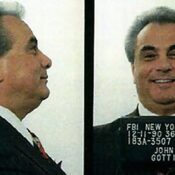After a fashion designer strikes gold with a new look, knockoffs quickly appear on store shelves. For example, Carrie Anne Roberts, founder of the brand Mère Soeur, learned that Old Navy was copying her bestselling T-shirt “Raising the Future.” Says Roberts, “I was a single mom, and the idea behind this T-shirt inspired my whole business. Now it’s been stripped of all meaning, and it feels really violating.”
Magazines such as Marie Claire and Cosmopolitan highlight these copies in regular “Splurge vs. Steal” features. Balenciaga comes out with a $795 sneaker; Zara immediately offers a nearly identical-looking shoe for $35.90. Taylor Swift wears a $2,675 Rick Owens biker jacket; H&M sells the knockoff for $37.80. High-end designers pay homage to each other as well. Gucci’s 2018 cruise collection included a jacket copied from Harlem couturier Dapper Dan’s work in the 1980s.
This is all perfectly legal. To the designers whose work is copied, copying may feel like a rip-off or theft. But it’s not. Theft, like ownership itself, is a legal conclusion, not an empirical fact. In America, there’s no protection for the labor that goes into fashion design. The business model of fast fashion — including global retailers like Zara and H&M — is to copy speedily what’s hot and sell it for less. As a rule, in fashion, everyone copies everyone. Copying design ideas is not theft.
Every few years the Council of Fashion Designers of America lobbies politicians in vain for a law to provide ownership for its members’ fashion design labor, thereby turning copying into theft. Ariele Elia, at New York’s Fashion Institute of Technology, says Congress doesn’t “see ramifications, that copying hurts the industry and makes it difficult for designers to emerge.”
Elia’s frustration is understandable but overstated. Legal ownership can be a much less important tool than people assume — and than creators assert. Sure, designers want more reward for their labor. Producers always do. But for intellectual labor, the dominant thrust of American law is to reward producers only to the extent it ultimately serves consumers’ interests. Would more ownership in fashion design help consumers? Probably not.
Tweeting can be more powerful than the courts. Being first to market can be decisive. Politeness and manners steer behavior. Legal ownership is just one tool for social control — a visible and salient battleground, to be sure — but it is often not the most effective way to motivate and reward creation. Nonlawyers and lawyers alike make this mistake, overvaluing law and missing effective alternatives. After all, the goal of shaping intellectual property is not to create more law, but to spur more innovation.
Kal Raustiala and Chris Sprigman, authors of The Knockoff Economy, have identified powerful alternatives to legal ownership that sustain creativity in the fashion world. Raustiala remarks, “Copyright has an intent behind it, and the intent is to protect creators so that they continue creating. When we looked at fashion, we saw an industry that was very, very creative and puts out tons of new ideas every season and has done that continuously for decades.” All without copyright. They call this the “piracy paradox” and show that copycats actually help the fashion industry innovate.
Fashion is not a strange outlier. Many economic arenas thrive with no ownership rights for producers. As Raustiala and Sprigman note, comedians do not copyright their routines; chefs do not own their recipes; sports coaches’ innovative plays are all freely copied. And yet new comedy routines, recipes, and sports plays are created all the time. The piracy paradox describes many creative industries and endeavors.
Comedians do not copyright their routines
Even old-school companies are increasingly recognizing the value of no ownership for intellectual labor. Take IBM, said to be the world’s largest patent holder. IBM now earns less from licensing its patent portfolio than from revenues related to Linux, a so-called open-source software language that no one owns. It’s created and maintained by volunteers. The intellectual labor behind Linux is free for anyone to use — including IBM, which sells hardware and services that work atop a Linux platform.
Wikipedia is perhaps the most familiar no-owner online resource, relying on donor time and money. It’s such a successful piece of free intellectual labor that it displaced an entire industry. Do students today even know what an encyclopedia is? Wikipedia has become so reliable that Apple uses it to answer your random Siri questions, as does Amazon with Alexa. Indeed, much of the crucial software enabling modern life has been created with no intellectual property ownership. If you use Firefox as your browser, you are reaping where others have sown. Same with Apache, which is open-source software that may be powering your airplane or ATM.
Reaping where others have sown is a much more integral part of life than people realize. How is this possible?
Lawyers and laypeople alike have a bias — an unjustified faith, really — that legal ownership matters. Often it doesn’t. Creators rely on at least four strategies to make a living off their labor, even without legal protection. The so-called first mover advantage is a powerful reward to creative labor and one that comes without many of the downsides of formal ownership. Coaches, for example, find it worthwhile to develop new tactics each season. Why? Because the first use of, say, the pistol offense helped win football games — no one saw it coming — advancing the innovator to the playoffs before competing coaches had time to adapt. Or the innovator gets hired by another team at a higher salary, or is paid more to stay put. Being first is often enough reward without any additional reward to labor. Michael Bloomberg built a multibillion-dollar business licensing terminals that give a fraction of a second lead time advantage on news and information relevant for trading.
Shame can also protect innovation. Comedians face the same dilemma as do fashion designers and coaches: They have no copyright protection. And as Stan Laurel once said, “All comedians steal from all comedians.” So how do comedians protect themselves, if telling the joke first is not enough? They use snarky asides during stand-up routines at comedy clubs to shame joke-stealers. For example, in 2007 during a Carlos Mencia performance at the L.A. Comedy Store, comedian Joe Rogan ran onstage and accused him of being “Men-Stealia.” In the close-knit community of comedians, money matters, but the real reward is the laugh, and shame makes the room go quiet. Shame can be a more powerful tool to reward labor than a lawsuit. It doesn’t always work — Milton Berle made his career as “the thief of bad gags” — but comedians think twice before lifting material, wary of potential harm to their reputations.
In fashion today, social media creates a third powerful, if imperfect, reward mechanism for creators. After Carrie Anne Roberts noticed the rip-offs, her fans swung into action, panning the copied “Raising the Future” T-shirt on Old Navy’s website. After days of Instagram shaming, Old Navy stopped selling the shirt and canceled further orders. Roberts was mad that her work was copied, but the David versus Goliath social media kerfuffle raised her profile higher than it had ever been. She came out far ahead.
Finally, it can make commercial sense to give away knowledge for free because it grows the pie. IBM gets so much value from Linux that the company willingly donates millions of dollars of its engineers’ time to maintain and improve the software. The better Linux performs, the more IBM can make by selling its services layered on top. So it contributes even though Linux benefits IBM’s competitors as well. Linux continues to improve, but no one owns it.
Entire industries thrive in a no-ownership world through these strategies — first mover advantages, shaming, social media, and growing the pie. None of these tools is perfect. Shaming can lead to violence; social media can become mob rule. Each tool for rewarding labor has advantages and limits. But that’s true for law as well.
And when creators do rely on law to counter copying, enforcement is often counterproductive. For years, the recording industry went around suing college students so they wouldn’t download music without paying. But much of this litigation backfired. Suing your customers is usually not a great marketing strategy.
Even industries heavily fortified with intellectual property often decide they benefit from tolerating theft. HBO knows that people are sharing its passwords illegally — and sees it as a good thing. The company doesn’t mind having its pockets picked because sharing creates a new generation of HBO “video addicts,” as the company’s president described its illicit viewers. When these viewers are older and wealthier, HBO believes they will pay for their own accounts. Tolerating theft is a long-term investment. In the meantime, theft creates valuable buzz for the network’s shows.
Surprisingly, tolerating theft can also benefit makers of luxury goods. Yves Saint Laurent prints its trademarked logo all over its handbags, and Rolex emblazons its watches. But zealously enforcing trademark protection may not always be a good strategy. The tourists buying fake YSL bags and Rolexes from shady vendors in Times Square are not taking sales away from legit stores — but they are teaching young consumers what they should aspire to. Fakes can be the best free advertising. Buyers of counterfeit luxury goods can form a pipeline of future customers for the real deal. One study found that 40 percent of people who bought counterfeit luxury goods ended up buying the high-end version after their trial run with the cheap fake. Other research has shown that for many luxury brands, tolerating a market in fakes increases the value of the original.
Even the Disney Company, the most incorrigible copyright-hoarder, may be coming around. The original Mickey Mouse copyright expires in 2024, and Disney has not geared up to buy itself another extension from Congress. How could that be? Isn’t it always cheaper just to pay lobbyists and make a few targeted campaign contributions? The roughly $100 million the company spent on prior extensions has paid off many times over. But Disney has found an even better ownership design strategy, one that lets it profit more by relying less on copyright: It adopted HBO’s pro-theft stance.
Disney now unofficially tolerates hundreds of small online shops run by die-hard fans selling T-shirts, buttons, pins, patches, jewelry, and thousands more items that leverage Disney characters. These stores don’t pay Disney a dime in licensing fees. Why the pivot to tolerating knockoffs? Because Disney learned that fan-made, unlicensed $25 T-shirts drive their wearers to Disney parks, where they buy expensive entrance tickets and pass the day spending even more money.
Comedians do not copyright their routines; chefs do not own their recipes; sports coaches’ innovative plays are all freely copied.
Another reason for Disney’s newfound tolerance: It has discovered the marketing research value from the hundreds of small knockoff shops. These shops turn out to be a vibrant source of ideas for new official Disney merchandise. In 2016 the online vendor Bibbidi Bobbidi Brooke came out with a hugely popular line of rose-gold sequined Mickey ears, something that had not occurred to the Disney licensors. So Disney copied the design, which sold out immediately in its official stores. Bibbidi Bobbidi Brooke was gracious, posting “always excited to see new merch offerings.” Her fans replied, “Yours will always be the original!!!” Everyone wins.
“I still don’t think they’re interested in letting anyone build a multimillion-dollar business, but they are much more understanding of the role that fan engagement plays,” one intellectual property professor said of Disney’s new approach. “As the record industry found out, it looks bad to sue your fans if they’re doing it because they are your fans.”
In many places in our economy, the real rule is I reap what you sow, yet innovation proceeds apace. Even when no one can claim ownership, people find ways to make creative labor worthwhile. Copying, sharing, and tolerated theft are key engines of growth. The question is not Should we increase copyright protections for fashion? With fashion as our guide, the question should be Where else can we eliminate legal ownership for intellectual labor?
Michael Heller is Lawrence A. Wien Professor of Real Estate Law at Columbia Law School, and James Salzman is Donald Bren Distinguished Professor of Environmental Law at UCLA School of Law.
Excerpted from Mine!: How the Hidden Rules of Ownership Control Our Lives. Reprinted by arrangement with Doubleday, an imprint of the Knopf Doubleday Publishing Group, a division of Penguin Random House LLC. Copyright © 2021 by Michael Heller and James Salzman
This article is featured in the November/December 2021 issue of The Saturday Evening Post. Subscribe to the magazine for more art, inspiring stories, fiction, humor, and features from our archives.
Featured image: Right and theft: It’s perfectly legal — and even beneficial — for retailers to make cheap knock-off versions of thousand-dollar designer gowns. (Shutterstock)
Become a Saturday Evening Post member and enjoy unlimited access. Subscribe now




Comments
While I am somewhat in sympathy with Michael Heller and James Salzman’s overall argument, they should perhaps have done more research on their examples drawn from the world of software. Linux is not a “software language,” it is an operating system kernel, a piece of software that enables the user to interact with other software and the computer hardware. (It is written largely though not entirely in a programming language called C.) Similar sorts of kernels lie at the heart of Microsoft’s Windows and Apple’s macOS operating systems. Linux itself forms the basis of multiple computer operating systems—Ubuntu and Red Hat Enterprise Linux to name two of the most popular—and is well-nigh ubiquitous as the basis for Google’s Android.
Nor are Heller and Salzman quite correct that “no one owns” Linux. It’s true that no one individual or organization can directly control how a Linux-based operating system is used. But this is not because no one owns it: in fact, Linux is copyright Linus Torvalds (its original author) and all its subsequent contributors (of which the authors correctly note there are many, including volunteers). Its value arises from the fact that all those contributions are submitted and subsequently distributed under a license in which they explicitly grant others the right to use the code under certain conditions.
Similar misunderstandings characterize the authors’ litany of other software products. Firefox is owned by the Mozilla Corporation, and Apache—which is a webserver; I’m unsure what use it would be “powering your airplane or ATM”—by the Apache Software Foundation. Both accept contributions and are distributed under similarly liberal, albeit different, licenses.
That is to say, the three software examples they pick have had such an impact not because “legal ownership for intellectual labor” was eliminated, but because the legal owners freely chose to exercise their right under existing copyright law to grant others the rights to use, modify, and distribute their work. If anything, their success could be taken as a rebuttal to the authors.